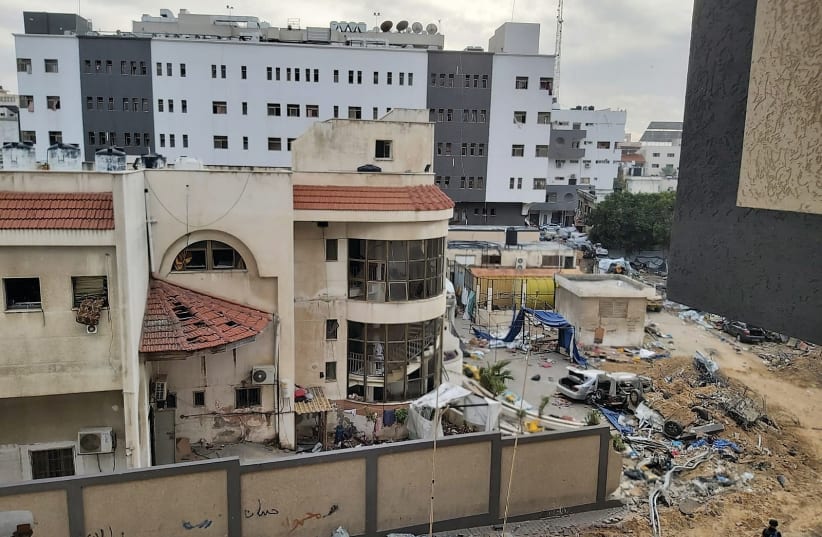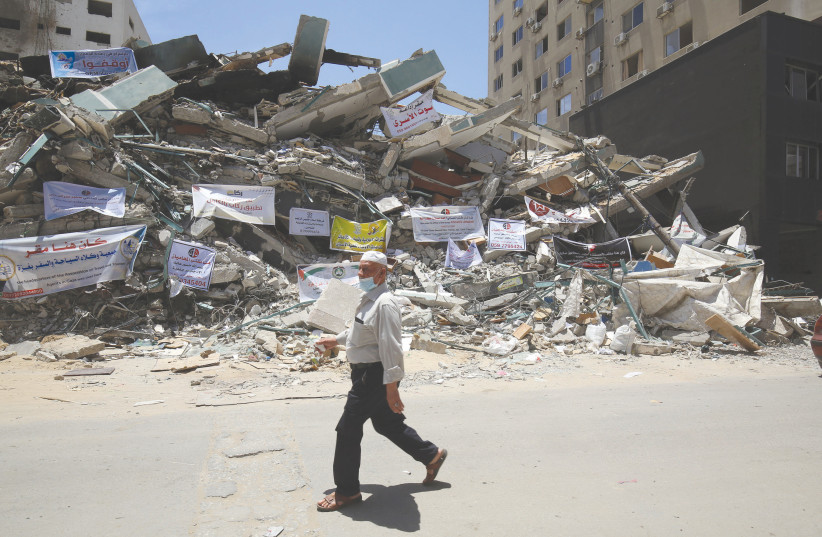The US and Israel are in total agreement about the need to topple Hamas, have different expectations about how this can be done, and disagree fundamentally about the future of Gaza when the war against Hamas ends.
Since day one, or rather from October 7, the Biden Administration has not wavered in its understanding of Israel’s need to dismantle Hamas. And that understanding manifested itself in unstinting moral and material support.
Early on, however, differences appeared regarding the tactics that can be used to achieve that goal. For instance, immediately after the Simchat Torah massacre, Israel wanted to cut off all electricity, fuel and water into Gaza—something the US opposed, pressing Israel to allow in trucks of humanitarian aid.
Differences expanded
Over the last two months, these differences have expanded, with the US now publicly pressing Israel to do more to protect Gazan civilians during the warfare, not to lead to any more temporary massive population displacements, and to let even more humanitarian and economic aid into the area. So far, however, the two sides have been able to work out the tactical differences, and they have not translated into any significant crisis.
Regarding the vision for the day after, or who exactly is going to take control of Gaza once Hamas is toppled, there are significant differences, and these came into stark relief on Saturday in comments made by Vice President Kamala Harris and Prime Minister Benjamin Netanyahu.
VP Harris on Israel-Hamas war
Harris, speaking about the Israel-Hamas war at the UN climate conference in Dubai, said that since shortly after October 7, the Biden administration has held internal discussions, as well as deliberations with partners in the region and around the world, about what a post-conflict Gaza will look like.
“Five principles guide our approach for post-conflict Gaza: no forceful displacement, no re-occupation, no siege or blockade, no reduction in territory, and no use of Gaza as a platform for terrorism. We want to see a unified Gaza and West Bank under the Palestinian Authority, and Palestinians’ voices and aspirations must be at the center of this work.”
If you look closely at those five principles, there is agreement on most of them. Israel is not intent on permanently displacing the Gaza population. The steps taken to clear Gazan citizens out of northern Gaza were meant only to clear civilians out of a battle zone to enable the IDF to fight terrorists there with minimal civilian deaths. The same principle will now be used to a lesser degree in southern Gaza.
Calls for resettlement of Gush Katif?
While some voices inside the government call for the resettlement of Gush Katif, this is not Prime Minister Benjamin Netanyahu or the government’s policy. Netanyahu and the government have stated that there is no intention of permanently reoccupying Gaza, though there is an interest in retaining overall security control of the area so that Hamas does not reemerge once it is defeated.
Regarding the siege or blockade of Gaza, Israel’s blockade of Gaza was put into place to prevent Hamas from doing what it did anyhow—build itself into a military power. If Hamas is no longer in control, the purpose for a blockade will be obviated as long as the force that eventually controls Gaza is benign and wants to bring in metal and concrete, not to build underground terror tunnels, but rather hospitals and schools.
As to a reduction of territory, on this matter there may be some disagreement between Israel and the US down the road. Israeli officials have spoken of the need to carve out a narrow buffer zone all along the border inside Gaza to prevent a recurrence of the situation where terrorists are positioned literally just meters away from Israeli communities.
No more terrorism in Gaza
As to the fifth point—that Gaza should not become a platform for terrorism—that is something Israel obviously agrees with 100%.
Where things get dicey is where Harris went from these five points: “We want to see a unified Gaza and West Bank under the Palestinian Authority.”
She then expanded on this: “The Palestinian Authority security forces must be strengthened to eventually assume security responsibilities in Gaza,” she said. “The Palestinian Authority must be revitalized, driven by the will of the Palestinian people, which will allow them to benefit from the rule of law and a transparent responsible government. Eventually, this revitalized Palestinian Authority must have the capacity to govern Gaza as well as the West Bank.”
Harris used language here that US officials have been using consistently over the last few weeks: a “revitalized Palestinian Authority,” without giving any indication of what that means practically. In their public comments, US officials tend to romanticize the PA—present it as a good-willed, peace-loving entity that just wants to live side by side with Israel in two states.
Netanyahu, in a press conference Saturday night, was unequivocal in stating that there was no way he would ever agree to the Palestinian Authority given control of Gaza, saying that Israel will not ignore or whitewash the PA’s enormous failings.
“We recognize all the bad things that come from the PA, and we don’t ignore them,” he said.
Among the “bad things” he enumerated were that the PA pays terrorists in jail for killing or trying to kill Jews; that they educate their children to a hatred of Israel, a desire to kill Jews and bring about Israel’s disappearance; that PA President Mahmoud Abbas, more than 50 days after the October 7 massacre, has yet to apologize; and that PA Leader Jabril Rajoub said that he hopes to see what happened on October 7 unfold from the West Bank as well.
Netanyahu said that the creation of the Palestinian Authority under the Oslo Agreement was a “horrible mistake” that took the most hostile elements within the Arab world and Palestinian society and transplanted them into the heart of Israel. “One thing I will not do,” he said, is take this “flawed thing” and put it in control of Gaza.
Acknowledging that this is “what some of our best friends recommend,” Netanyahu said, “I think differently.”
“I think we will have to create something different,” he said of Gaza the day after the war, adding that Israel will need to retain overall security control and that the internal administration “will have to be through a completely different process, as the PA has failed in this.” Regarding the PA, Netanyahu said, “It doesn’t fight terrorism, it funds terror; it doesn’t educate toward peace, it educates toward Israel’s disappearance. That is not the entity that needs to take control of Gaza.”
The differences between the US and Israel on this matter could not be more stark: Harris and the US administration see the PA as part of the solution; Israel sees it as a major part of the problem.
The key to bridging the gap—and it is a considerable one—may be in the definition of that word that the US is now using in talking about the PA: “revitalized.” If a “revitalized” PA means a wholly revamped and restructured PA, with new leaders, new policies, new textbooks, and hands-on input from countries like the United Arab Emirates rather than Qatar, then that is one thing.
If, however, it means just pouring old wine into a new bottle, then -- at the risk of conflating this into a full-blown diplomatic crisis over the issue, as some will breathlessly want to portray it -- just say the two countries are on a non-catastrophic collision course over this specific issue.

